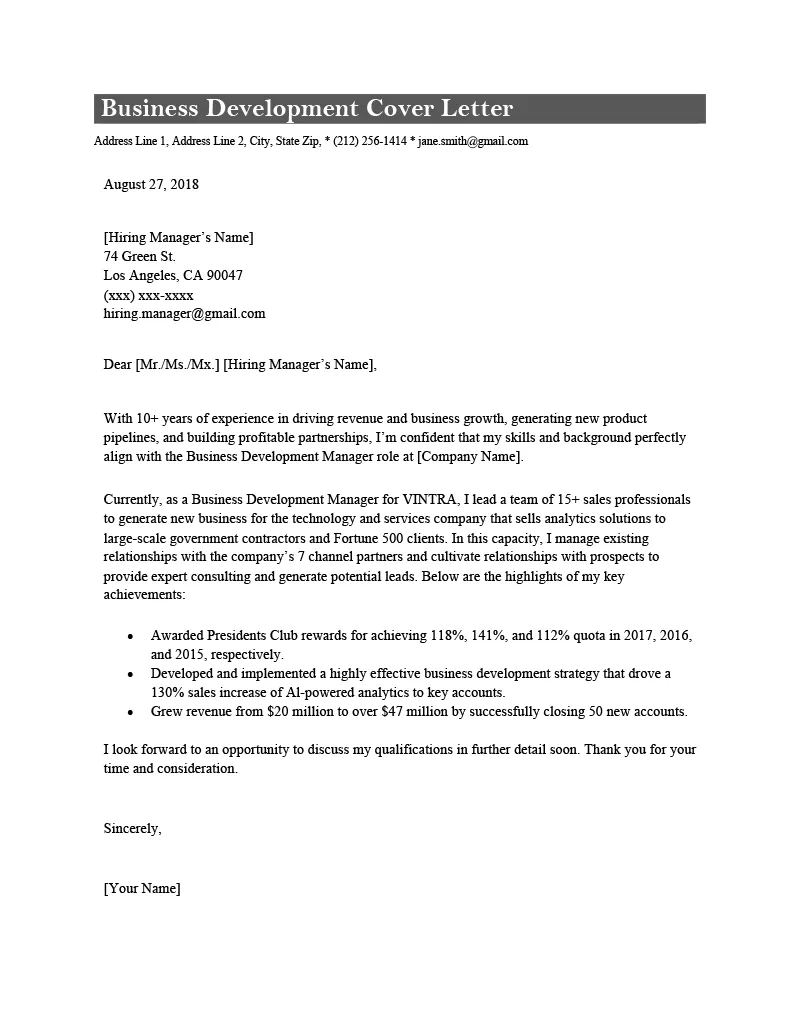Cover Letter Secrets to Land Your Dream Job
In the competitive world of business development, a well-crafted cover letter is your secret weapon. It’s your first impression, a chance to showcase your skills and enthusiasm, and ultimately, the key to unlocking your dream job. This guide unveils the cover letter secrets that will help you stand out from the crowd and make a lasting impact on potential employers. Discover the essential elements, formatting tips, and common pitfalls to avoid, as you learn how to create a cover letter that truly shines. Your cover letter is more than just a formality; it’s an opportunity to tell your unique story and demonstrate why you’re the perfect fit for the role.
Understanding the Importance of a Cover Letter
In today’s job market, many job seekers are still unsure about the necessity of a cover letter. However, a compelling cover letter provides a unique opportunity to elaborate on your resume, highlight your qualifications, and express your enthusiasm for the specific role and company. It provides context to your experience and allows you to showcase your personality and communication skills. It’s your chance to demonstrate that you’ve done your research, understand the company’s needs, and are genuinely interested in contributing to their success. Think of it as your personal introduction, a chance to make a human connection before you even step into an interview. By crafting a well-written cover letter, you show your commitment and attention to detail, increasing your chances of landing an interview.
Why a Cover Letter is Crucial for Business Development
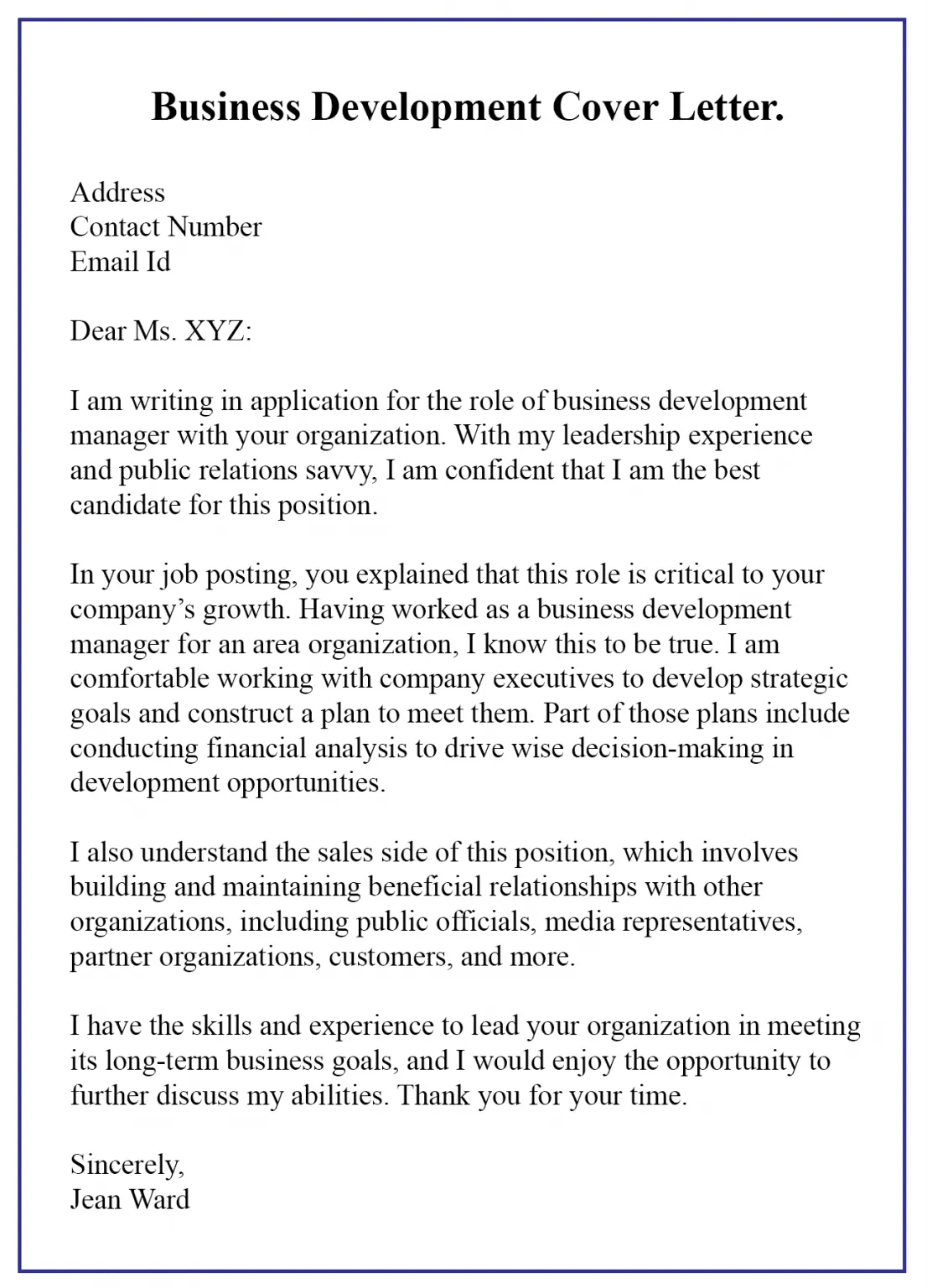
For business development roles specifically, a cover letter is absolutely crucial. These positions require excellent communication, persuasion, and a keen understanding of business strategy. Your cover letter allows you to showcase these skills in action. It gives you space to explain your understanding of the company’s goals, how your experience aligns with their needs, and why you are the ideal candidate to drive growth. By demonstrating your knowledge of the industry, your ability to identify opportunities, and your passion for business development, you position yourself as a valuable asset. It’s your chance to highlight your ability to build relationships, negotiate deals, and contribute to the company’s bottom line. A strong cover letter tells the story of how you can help them succeed.
Key Elements of a Winning Cover Letter
A winning cover letter goes beyond simply restating your resume; it’s a strategic document designed to capture attention and generate interest. Begin by addressing the hiring manager by name, if possible, to demonstrate you’ve taken the time to research the company. Start with a compelling opening that grabs the reader’s attention, clearly stating the position you’re applying for and why you’re excited about the opportunity. Highlight your key skills and experience that align with the job requirements, providing specific examples of your achievements and quantifiable results. The body should detail your understanding of the company’s needs and how you can contribute to their success. Conclude by reiterating your interest, summarizing your key qualifications, and expressing your eagerness for an interview. Proofread meticulously to ensure there are no errors.
Personalizing Your Cover Letter for Business Development Roles
Personalization is key to making your cover letter stand out. Instead of using a generic template, tailor your letter to each specific role and company. Research the company’s mission, values, and recent achievements. Show that you understand their business model, target market, and competitive landscape. Mention specific projects, initiatives, or challenges that resonate with your skills and experience. Demonstrate how you can contribute to their growth and success. By personalizing your letter, you show the hiring manager that you are genuinely interested in the position and have the knowledge and skills to make a real impact. Highlighting your understanding of their business is a must.
Researching the Company and Tailoring Your Letter
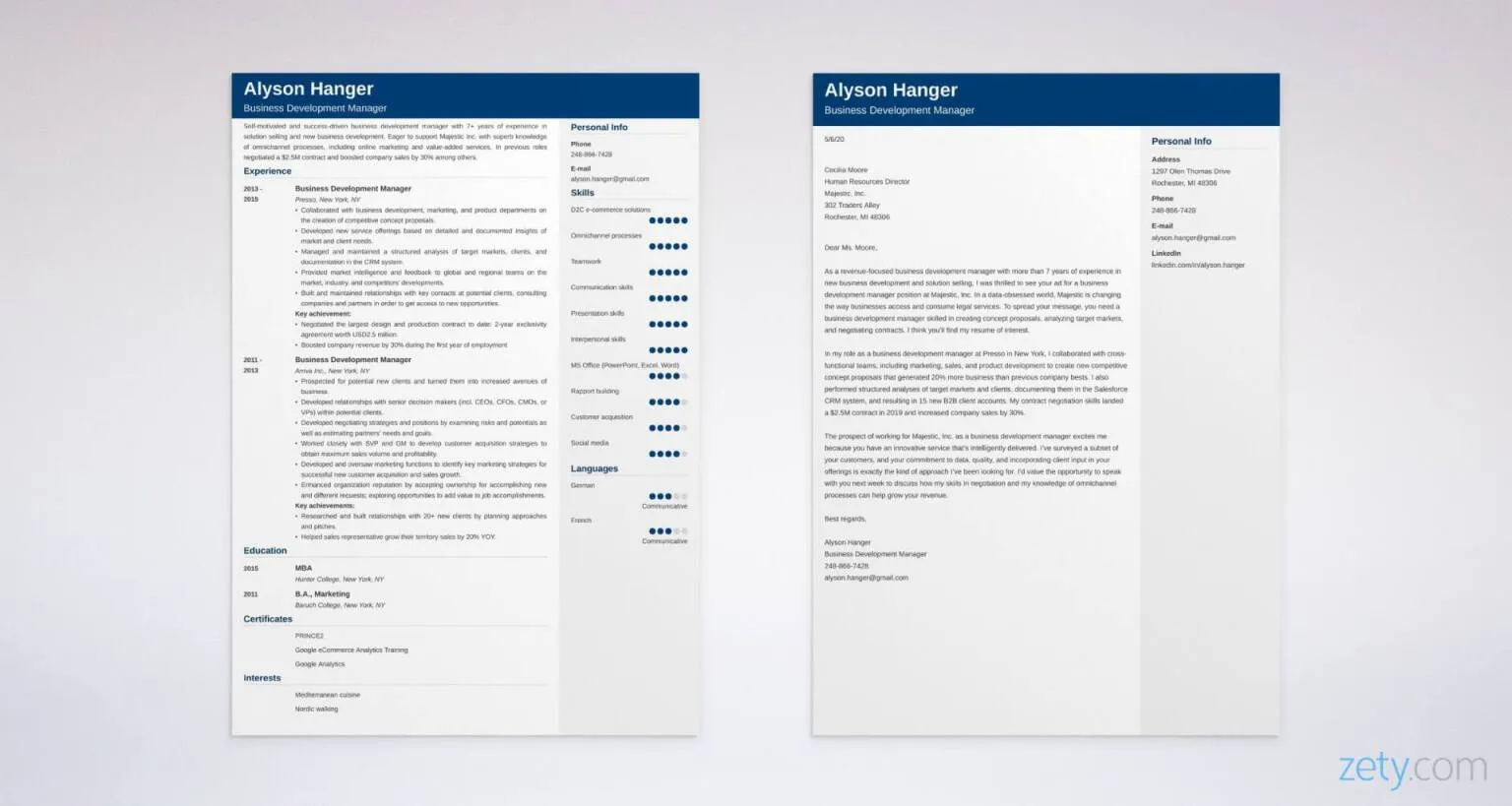
Thorough research is the foundation of a compelling cover letter. Start by visiting the company’s website, reading their ‘About Us’ section, and exploring their social media profiles. Understand their products or services, their target audience, and their current market position. Look for news articles, press releases, and industry reports to gain insights into their recent activities and future plans. This research will not only help you tailor your letter but also demonstrate your initiative and genuine interest. Use your findings to address specific aspects of the company in your letter, showcasing how your skills and experience align with their goals and challenges. This level of detail will set you apart from applicants who send generic applications.
Highlighting Relevant Skills and Experience
Business development roles require a unique blend of skills, including sales, marketing, relationship management, negotiation, and strategic thinking. In your cover letter, clearly highlight the skills most relevant to the position you’re applying for. Provide specific examples of how you’ve used these skills in the past to achieve positive results. Did you successfully close a major deal? Did you increase sales by a certain percentage? Did you build a strong relationship with a key client? Quantify your achievements whenever possible to demonstrate your impact. Use action verbs to describe your accomplishments, such as ’negotiated,’ ‘developed,’ ‘managed,’ or ‘implemented.’ By showcasing your skills and providing concrete examples, you build a strong case for why you’re the ideal candidate. Look at the job description and focus on the keywords.
Showcasing Your Achievements and Quantifiable Results
Don’t just list your responsibilities; showcase your achievements. The most effective cover letters provide evidence of your success through quantifiable results. Instead of saying ‘Managed a sales team,’ say ‘Managed a sales team of 10, increasing revenue by 15% in one year.’ Instead of saying ‘Developed marketing campaigns,’ say ‘Developed and executed marketing campaigns that generated a 20% increase in leads.’ Use numbers, percentages, and specific data to demonstrate the impact of your work. This approach not only strengthens your claims but also provides the hiring manager with concrete evidence of your abilities. Focus on accomplishments that align with the company’s goals and the requirements of the position. Include these metrics throughout the cover letter.
Structuring Your Cover Letter for Maximum Impact
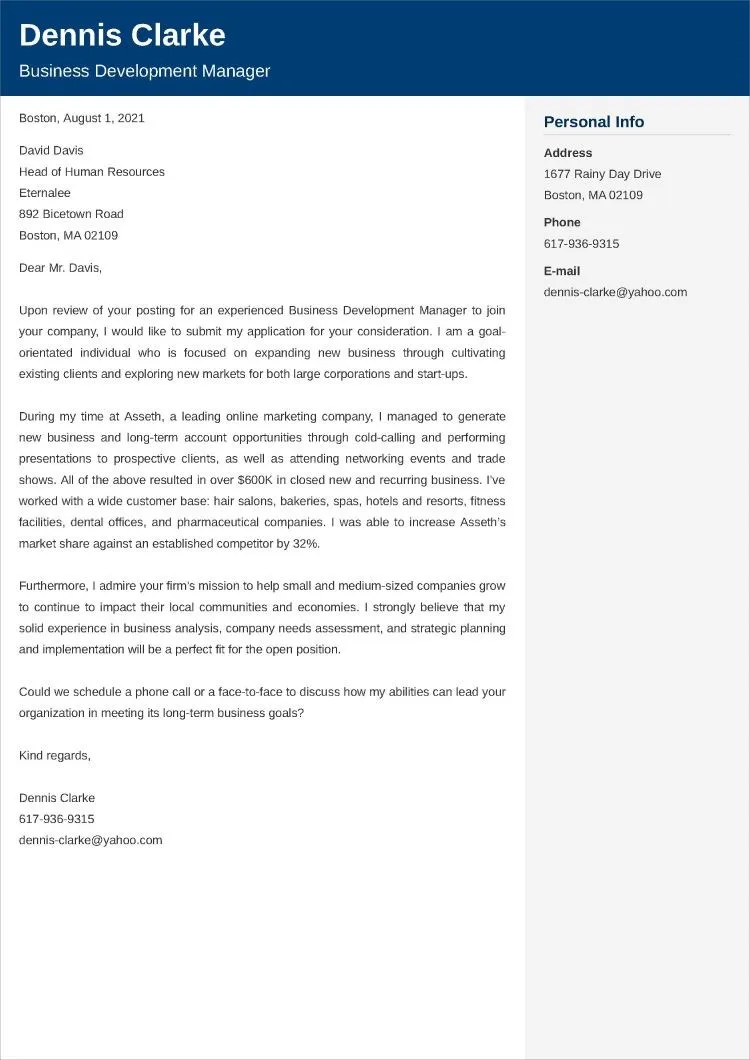
A well-structured cover letter is easy to read and highlights the most important information. Begin with a clear and concise opening that immediately grabs the reader’s attention, stating the position you’re applying for and your enthusiasm for the role. In the body paragraphs, focus on your key skills and experience, providing specific examples and quantifiable results. Use a logical flow, connecting your qualifications to the company’s needs. Tailor the content to the specific requirements of the job. Conclude with a strong closing statement, reiterating your interest, summarizing your key qualifications, and expressing your eagerness for an interview. This structure ensures your most compelling points are highlighted, making a strong first impression and enhancing your chances of landing an interview.
The Ideal Cover Letter Format
The ideal cover letter format is clean, professional, and easy to read. Use a standard font like Arial or Times New Roman, with a font size between 10 and 12 points. Set your margins to 1 inch on all sides. Start with your contact information, the date, and the hiring manager’s contact information. Use clear headings and subheadings to organize your content and make it easy to scan. Keep the letter concise, ideally one page long, unless specified otherwise. Use bullet points to highlight key skills or accomplishments. Proofread meticulously to ensure there are no errors. A well-formatted cover letter demonstrates your attention to detail and professionalism.
Crafting a Compelling Opening
The opening paragraph is crucial for capturing the hiring manager’s attention. Start with a strong statement that immediately grabs the reader’s interest. Mention the specific position you are applying for and how you learned about the opportunity. Express your genuine enthusiasm for the role and the company. Briefly highlight your most relevant qualifications or experiences. Avoid generic phrases like ‘I am writing to express my interest.’ Instead, use a more engaging approach, such as mentioning a specific achievement or skill that aligns with the job requirements. The goal is to make the reader want to learn more. A strong opening shows that you are genuinely interested in the position and have done your homework.
Developing Strong Body Paragraphs
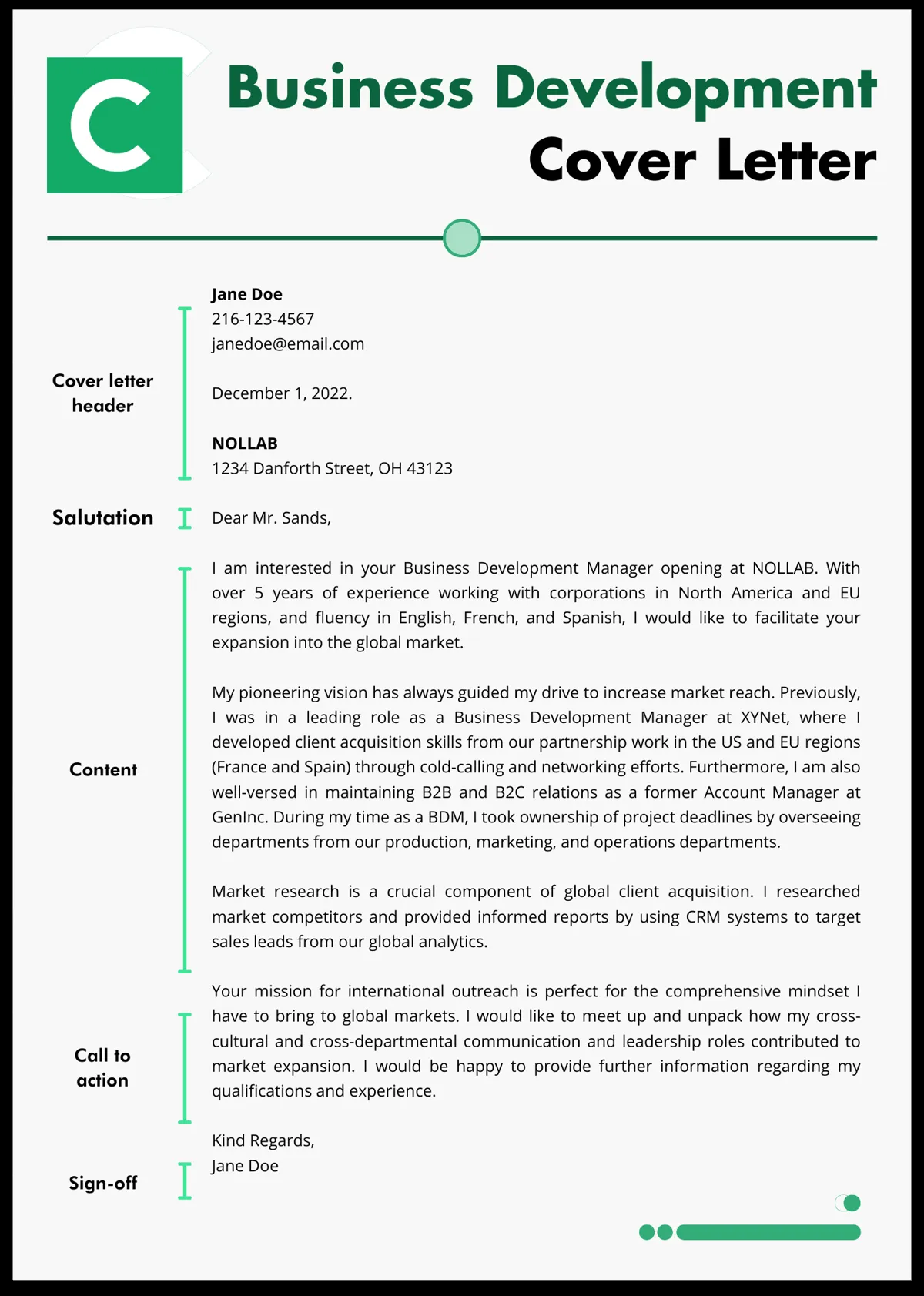
The body paragraphs of your cover letter are where you elaborate on your skills, experience, and achievements. Use these paragraphs to demonstrate how your qualifications align with the company’s needs. Provide specific examples and quantifiable results to support your claims. Focus on the requirements listed in the job description and highlight the skills and experiences that are most relevant. Use action verbs to describe your accomplishments and demonstrate your impact. Show, don’t just tell. Provide concrete evidence of your ability to succeed in the role. Connect your experience to the company’s goals and demonstrate how you can contribute to their success. Address any specific needs or challenges mentioned in the job posting.
Writing a Powerful Closing
The closing paragraph should leave a lasting impression. Reiterate your interest in the position and summarize your key qualifications. Express your enthusiasm for the opportunity and your confidence in your ability to contribute to the company’s success. Clearly state your availability for an interview and how you can be reached. Thank the hiring manager for their time and consideration. Avoid sounding generic or overly enthusiastic. End with a professional closing, such as ‘Sincerely’ or ‘Best regards,’ followed by your name. A strong closing reinforces your interest and reinforces your qualifications, increasing your chances of moving to the next stage of the hiring process.
Common Mistakes to Avoid in Your Cover Letter
Avoiding common mistakes is crucial for creating an effective cover letter. Ensure your letter is free from typos, grammatical errors, and formatting issues. Avoid generic language and show, instead of telling, demonstrate. Make sure the content is personalized to the specific role and company. Use clear and concise language, avoiding jargon and overly complex sentences. Don’t focus solely on yourself; highlight how your skills and experience can benefit the employer. Ensure you’ve addressed all the key requirements mentioned in the job description. Always proofread carefully and ask a friend or colleague to review your letter before submitting it. Correcting these common mistakes will greatly increase your chances of success.
Generic Language and Lack of Personalization
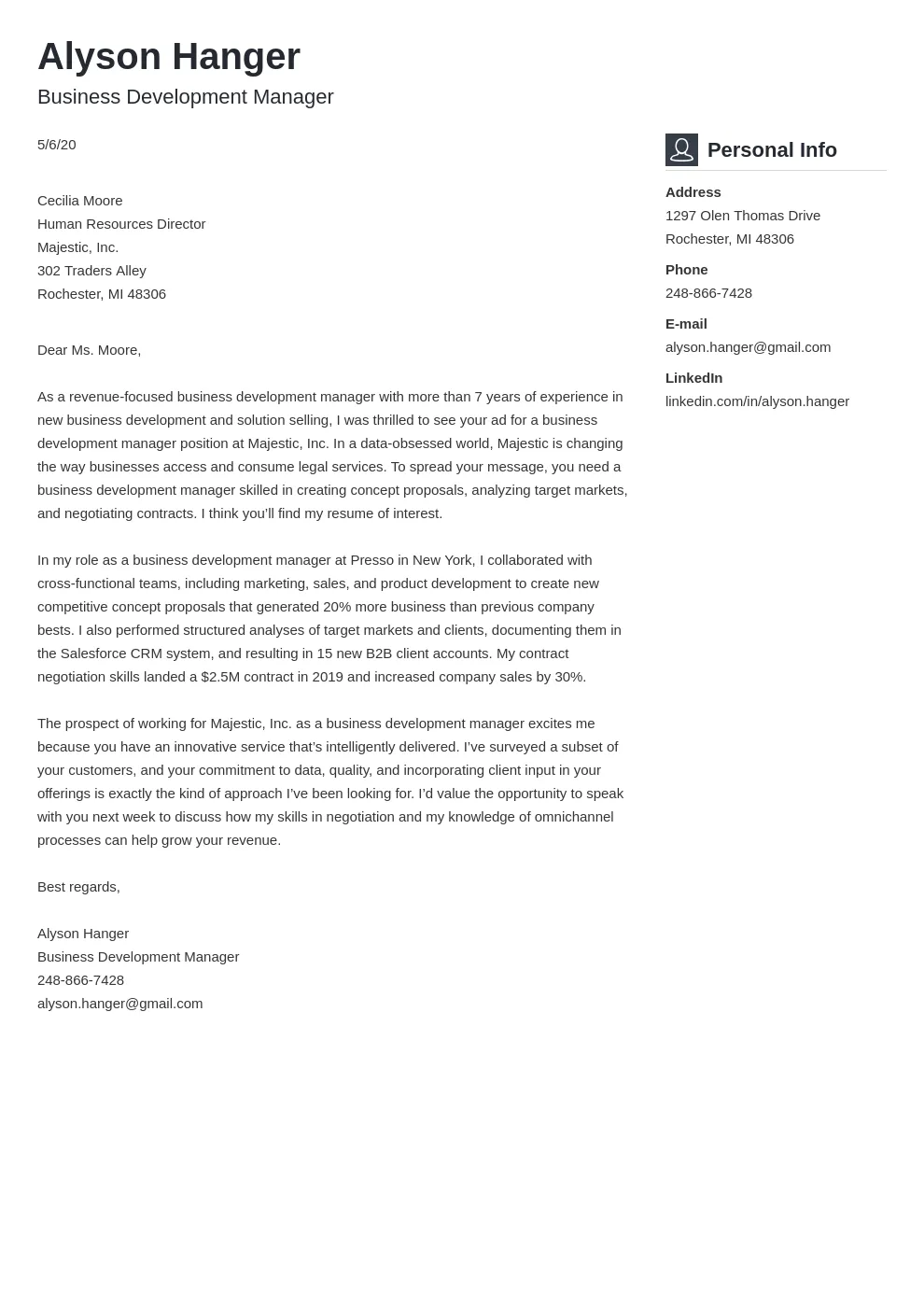
One of the biggest mistakes is using generic language and failing to personalize your cover letter. Avoid using templates that can be easily recognized as such. Instead, tailor your letter to each specific job and company. Research the company’s mission, values, and recent achievements. Show that you understand their business model, target market, and challenges. Mention specific projects, initiatives, or challenges that resonate with your skills and experience. By demonstrating your knowledge and enthusiasm, you show the hiring manager that you are genuinely interested in the position and have the knowledge and skills to make a real impact. Avoid using cliché phrases and focus on what makes you unique.
Typos and Grammatical Errors
Typos and grammatical errors can be deal-breakers. They create a negative impression and suggest a lack of attention to detail. Proofread your cover letter carefully, and consider using a grammar checker tool to identify errors. Ensure correct spelling, punctuation, and grammar. Ask a friend or colleague to review your letter before submitting it. A fresh pair of eyes can often catch mistakes that you might miss. Taking the time to eliminate these errors demonstrates your professionalism and commitment to excellence. A flawless cover letter reflects well on your communication skills and attention to detail.
Focusing on Yourself Rather Than the Employer’s Needs
A common mistake is focusing too much on yourself and your needs, rather than highlighting how you can benefit the employer. While it’s important to showcase your skills and experience, the cover letter should primarily focus on how you can contribute to the company’s success. Show how your skills align with the company’s goals, and how you can help them achieve their objectives. Provide specific examples of how you’ve solved problems, generated revenue, or improved processes in the past. Demonstrate that you understand the challenges the company faces and are prepared to contribute to their success. Focus on how you can solve their problems and help them reach their goals. Always focus on the value you bring.
Cover Letter Examples for Business Development Positions
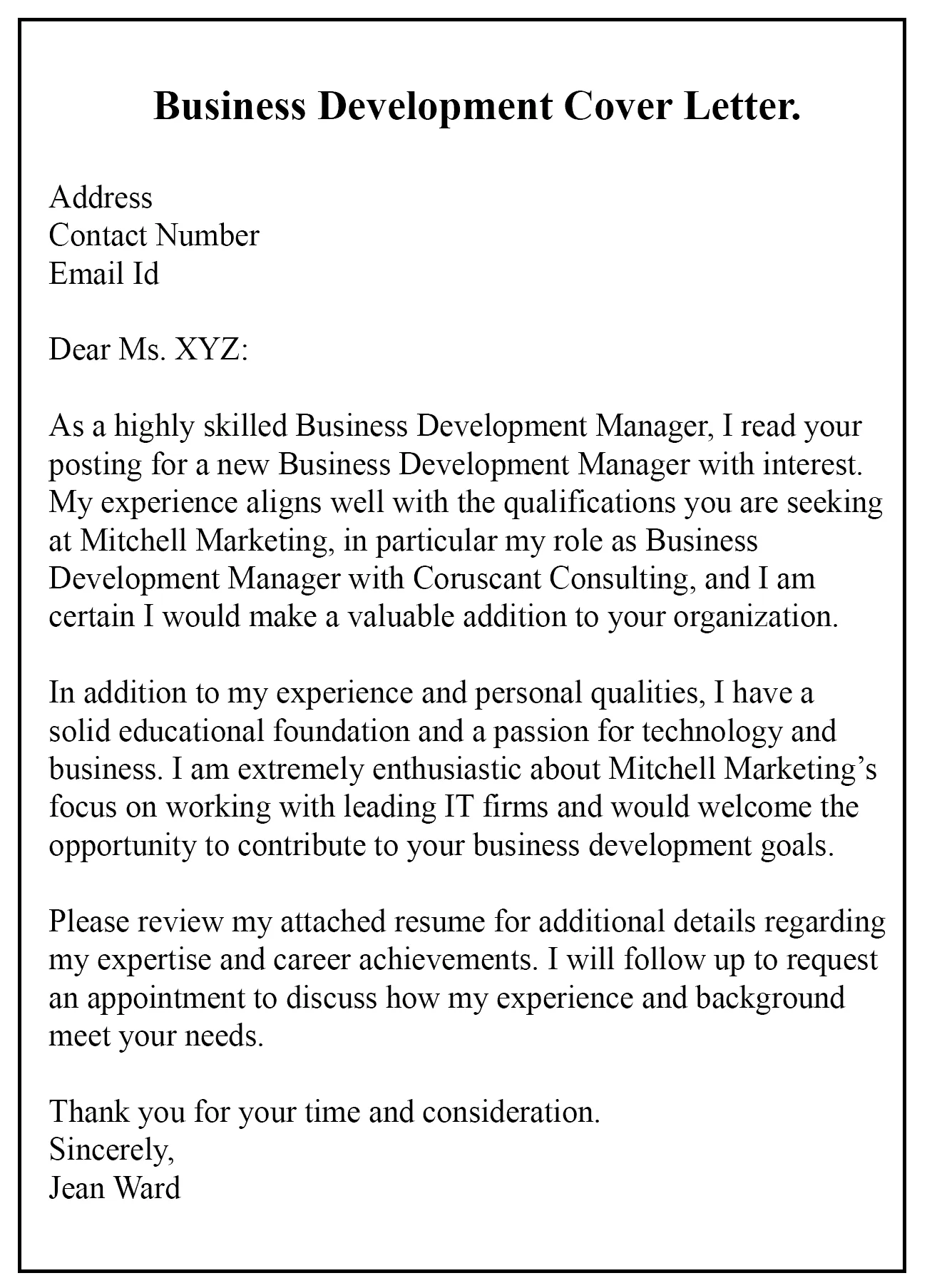
Reviewing cover letter examples can provide valuable insights and inspiration. Examples should be tailored to different levels of experience, from entry-level to senior positions. Analyze the structure, language, and tone of successful cover letters. Pay attention to how the candidates highlight their skills, experience, and achievements. Use these examples as a guide to create your own, personalized cover letter. Adapt the examples to reflect your unique qualifications and the requirements of the specific job you’re applying for. Tailor the examples to your specific skills, the role, and the company. Remember to personalize the examples to showcase your own unique qualities. Examples are only for guidance; your cover letter should be unique to you.
Entry-Level Business Development Cover Letter Example
An entry-level cover letter should focus on demonstrating your enthusiasm, transferable skills, and potential. Highlight any relevant coursework, internships, or volunteer experiences. Showcase your communication, analytical, and problem-solving abilities. If you have any relevant experience, such as sales, customer service, or marketing, be sure to highlight it. Express your eagerness to learn and contribute to the company’s success. Mention your understanding of the business development process, even if you lack direct experience. Tailor the letter to the specific company and role, demonstrating your research and initiative. Show your understanding of the company’s mission and what you hope to achieve.
Mid-Level Business Development Cover Letter Example
A mid-level cover letter should highlight your experience, accomplishments, and leadership skills. Showcase your track record of success in business development. Provide specific examples of deals closed, revenue generated, and client relationships managed. Highlight your ability to build and maintain relationships, negotiate contracts, and drive growth. Demonstrate your understanding of the business development process, including lead generation, qualification, and closing. Emphasize your ability to work independently, as well as collaborate with a team. Show the skills needed for growth. Make sure you focus on your experience.
Senior-Level Business Development Cover Letter Example
A senior-level cover letter should showcase your leadership, strategic thinking, and ability to drive significant results. Highlight your experience in developing and executing business development strategies. Provide specific examples of successful partnerships, revenue growth, and market expansion. Showcase your ability to manage and mentor a team. Demonstrate your understanding of the industry and your ability to identify new opportunities. Emphasize your leadership skills, strategic vision, and ability to contribute to the company’s overall success. Showcase your ability to work with and lead a team. Show how you are qualified for a leadership role.
Optimizing Your Cover Letter for Applicant Tracking Systems (ATS)
Many companies use Applicant Tracking Systems (ATS) to screen applications. To ensure your cover letter is not automatically rejected, optimize it for ATS compatibility. Use keywords from the job description throughout your letter. Format your letter in a clear and concise manner, using a standard font and formatting. Avoid using tables, images, or complex formatting that may not be compatible with the ATS. Ensure your letter is easily readable by the system. Structure the letter logically, with clear headings and subheadings. By following these steps, you increase the chances of your cover letter being reviewed by a human. This step can be crucial when applying for a job.
Keywords and Formatting for ATS Compatibility
To optimize your cover letter for ATS compatibility, focus on using relevant keywords and following a clean, readable format. Analyze the job description and identify the key skills, experience, and requirements. Incorporate these keywords naturally throughout your cover letter. Use a standard font like Arial or Times New Roman, with a font size between 10 and 12 points. Avoid using tables, images, or complex formatting. Use clear headings and subheadings to organize your content. Keep your letter concise and easy to scan. Ensure the text is left-aligned, with single spacing between lines and double spacing between paragraphs. By using a clean format, you ensure that your cover letter can be accurately scanned by the ATS. This is a crucial step to getting past the robots.
Submitting Your Cover Letter and Following Up
Submitting your cover letter is just the first step. Following up is essential to demonstrate your interest and ensure your application is reviewed. After submitting your application, proofread your cover letter one last time. Follow the instructions outlined in the job posting. If there is an option to submit the cover letter as a PDF, do so. Save a copy of your cover letter for your records. Consider sending a thank-you note to the hiring manager or recruiter. After a reasonable amount of time, follow up with the hiring manager to inquire about the status of your application. This helps you stand out.
Proofreading and Editing Your Cover Letter
Proofreading and editing are crucial steps that should not be skipped. Before submitting your cover letter, carefully proofread it for any typos, grammatical errors, or formatting issues. Read your letter aloud to catch any awkward phrasing or unclear sentences. Ask a friend, colleague, or career counselor to review your letter and provide feedback. A fresh pair of eyes can often identify errors that you might have missed. Make sure your letter is concise, well-organized, and free of errors. A well-proofread cover letter demonstrates your attention to detail and professionalism. A polished cover letter makes a positive impression.
Following Up After Submitting Your Application
Following up after submitting your application can help you stay top of mind and show your continued interest. After a week or two, send a brief email to the hiring manager or recruiter, thanking them for their time and reiterating your interest in the position. Briefly mention your most relevant qualifications and express your enthusiasm for the opportunity. Keep the email concise and professional. Avoid being overly persistent or demanding. If you haven’t heard back after a reasonable period, consider reaching out again. A well-timed follow-up can make a positive impression and increase your chances of landing an interview. A simple email can go a long way. Good luck with your job search.
